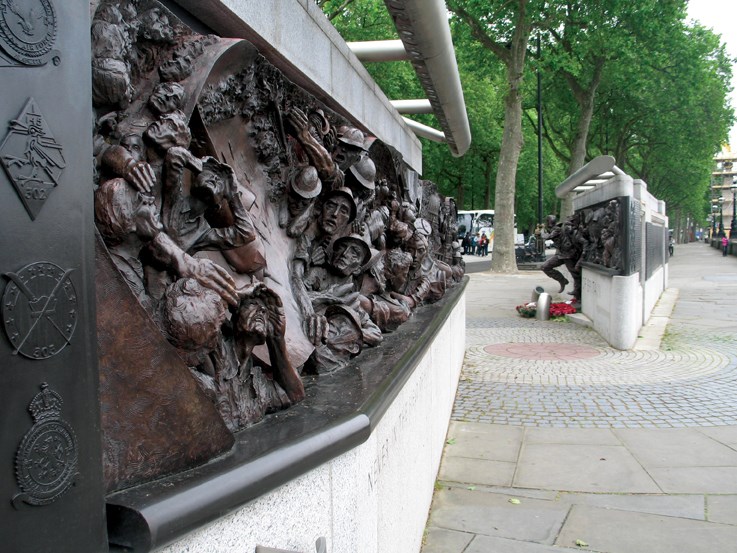Someone has placed faded flowers in front of two blocks of stone, a war memorial on the Thames embankment in London in front of images of pilots who fought during the Battle of Britain, the giant battle in the sky against the German Luftwaffe that began in earnest in July 1940.
If you are visiting England this summer and want to see something special that involves Canadians in a unique and artistic way, plan on taking a stroll along the embankment near the Westminster Bridge, just across the river from the London Eye (the huge ferris wheel).
Nearly 3,000 men of Britain’s Royal Air Force took part in the Battle of Britain – those who Prime Minister Winston Churchill called The Few. “Never in the field of human conflict was so much owed by so many to so few.” This sentiment is inscribed on the memorial.
While most of the pilots were British and they are certainly honoured here, Fighter Command was an international force. The pilots from Canada who also took part are remembered in four columns of names chiselled in stone. (Newfoundland has a solitary name inscribed separately as they were not part of Canada in 1940.)
The fighters came from all over the Commonwealth and Europe – from New Zealand, Australia, South Africa, Rhodesia (now Zimbabwe), Belgium, France, Poland and Czechoslovakia. They are all remembered.
From a distance, the two blocks are not pretty – it is not your grandiose monument like Nelson perched on his column. But go up close and look at the images carved into the stone: the faces of the pilots grimacing in horror, St. Paul’s Cathedral under fire, the women who worked tirelessly in the aircraft factories, the people in their gas masks, and those who poured tea or nursed the wounded. The story is told more poignantly in stone than could be told in print.
If the memorial sparks an interest in World War II history, then you have only a short walk to Whitehall to the War Rooms, the underground centre of operations where Churchill and the commanders of the British forces held sway. Follow the signs to an imposing gateway between government buildings. Security personnel abound, since these are official buildings near 10 Downing Street, residence of the prime minister, but the men in black will give you directions to the War Rooms door tucked away on a corner. Visitors can view the exhibit for a fee: 19 pounds sterling for adults, less for seniors and students. At a gift shop you will find much Churchill memorabilia and the usual T-shirts, postcards and, for me, an interesting curiosity: a replica of a war-time cookbook for housewives coping with food rationing.



